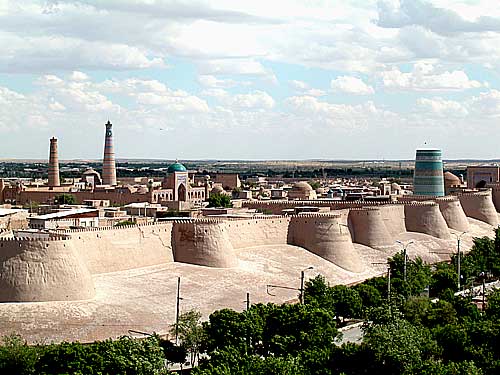



Attraction

Recreation

From January 23 to January 28, 10,000-armed horsemen besieged the town. There were cruel battles beneath Khiva's walls. It was necessary to bring in more military forces for the complete defeat of the revolt. These military forces were made up of the Khorezm army and Turkfront ground troops and air forces. These troops swept through the country with fire and sword. The Fourth Cavalrymen Regiment took part in the last military expedition against Djunaid Khan. It consisted of a 3,000 camel caravan, nine planes, and a Turkmen regiment of Yakhshi Geldi.
On the 8th of April, Djunaid Khan was forced to retreat across the Persian border with the remnant of his troops. His emotional nationalist uprising had served to sober the Bolshevik forces. The Central Asian Bureau of the Communist Party noted on 20 February 1924 that the pure class political policy didn't have a sufficient basis in Khorezm.» On its own initiative, the party changed a great number of features in the republic, signaling a retreat on the part of the government retreat from the class-conflict based policy. Additions were made to the Constitution; a tax that had been placed on rich peasants and craftsmen for using hired labor was cancelled, the inviolability of free lands was declared, amnesty was given to participants in the uprising, and measures to improve the public economy were undertaken.
However, these measures couldn't change the political situation in the country. The conflict inherent in the political situation didn't lessen. The unfading national resistance in Khorezm, like that in Bukhara, grew into a freedom movement that fought for its sovereignty, stability, and historic traditions. Alien structures were being imposed on public life: in the political system, Soviet councils were introduced replacing of khakims and aksakals; in economics, private property was abolished (the holiness and inviolability of which had been taught for many centuries); in the spiritual life attacks on religion, particularly on Islam, began; and in social life, the complete economic reforms on the basis of economic policies and plans.
Thus, the basic leadership of the political, economic, and financial life of the republic came under the control of Russia and it became an entity within the structures of its state system. The new constitution, authorized by the Fourth Khorezm Kurultay Council on 17 October 1923, officially transformed the Khorezm Republic into a socialistic construct and confirmed its subordination to Russia, According to the new Constitution, private ownership of land was cancelled, and all land became public property, to be handed to the workers without any repayment. At Kurultay, a very important question about vakufs was solved with this decision: «The peasants on free grounds are not forced to pay the uniform agricultural tax.» These and other Kurultay decisions caused an eruption of national indignation, especially among the clergy, which had been shut out of the economic and political life of the country and also deprived of all civil rights. Turkmen were also dissatisfied with the lack of attention given to their needs, while peasants, handicraftsmen, and merchants were dissatisfied with the land tax decision, which destroyed the economic relations sanctified not only by religion but also by the custom of many centuries.)
All complaints about the new reforms went to Djunaid Khan, who supported the country's independence, and the preservation of its customs and religion. His nationalist movement, which was identified by the officials as bas-machestvo, caused anxiety within the government. A few days after the completion of the Fourth Kurultay, the Central Committee of the Communist Party asked the Central Asia Bureau to increase the number of Russian troops in the Republic. At the end of 1923, there was an attempt to start peace talks with Djunaid Khan. However, the terms he put forward did not satisfy the officials. Among his terms were the following: 1) to withdraw Russian troops, 2) to give complete freedom to shariat, 3) to restore all former khakims and aksakals to their positions, 4) to cancel taxes and patents. The negotiations failed, as did the clergy then interceded on behalf of Djunaid Khan.
This marked the beginning of Djunaid Khan's revolt, which involved the biggest part of the nomadic tribes of Turkmen on the boundary of the Khorezm Oasis. An uprising in Khazar-saps and Pitnyak, mostly inhabited by Uzbeks, also played an important role in this event. The national freedom movement grew and soon reached Khiva, from January 23 to January 28, the town was besieged by 10,000-armed horseman. There were cruel battles beneath Khiva's walls. It was necessary to bring in more military forces for the complete defeat of the revolt. These military forces were made up of the Khorezm army and Turkfront ground troops and air forces. These troops swept through the country with fire and sword. The Fourth Cavalrymen Regiment took part in the last military expedition against Djunaid Khan. It consisted of a 3,000 camel caravan, nine planes, and a Turkmen regiment of Yakhshi Qeldi.
On the 8th of April, Djunaid Khan was forced to retreat across the Persian border with the remnant of his troops. Misemotional nationalist uprising had served to sober the Bolshevik forces. The Central Asian Bureau of the Communist Party noted on 20 February 1924 that the pure class political policy ... didn't have a sufficient basis in Khorezm.» On its own initiative, the party changed a great number of features in the republic, signaling a retreat on the part of the government retreat from the class-conflict based policy. Additions were made to the Constitution; a tax that had been placed on rich peasants and craftsmen for using hired labor was cancelled, the inviolability of free lands was declared, amnesty was given to participants in the uprising, and measures to improve the public economy were undertaken.
However, these measures couldn't change the political situation in the country. The conflict inherent in the political situation didn't lessen. The unfading national resistance in Khorezm, like that in Bukhara, grew into a freedom movement that fought for its sovereignty, stability, and historic traditions. Alien structures were being imposed on public life: in the political system, Soviet councils were introduced replacing of khakims and aksakals; in economics, private property was abolished (the holiness and inviolability of which had been taught for many centuries); in the spiritual life attacks on religion, particularly on Islam, began; and in social life, the complete destruction of the social layers of Khorezm society took place.
Central Asia had long regarded the unique identity of state as the foundation of its stability. The people of Central Asia thought of Khorezm, Bukhara, and Turkestan as important expressions of their mentality, history, faith, and spirituality — as the Motherland of their ancestors. One can hear these sentiments expressed in Central Asian national movements for freedom in the 1920s. At that time, under the slogans -Turkestan is the motherland of the Turkestan people», «Let's banish the enemy from our country!» and «Khorezm is for Khorezmians!» all these countries fought for their independence. The resistance of these historic peoples became a stumbling block in the Bolsheviks' reforms. They couldn't stop the growing national resistance even with the help of the powerful military contingent they maintained on the Turkestan front.
In January 1924, the leaders of the Russian Communist Party introduced the idea of ethnic segregation, which originated with the Turk commission in 1920, when the uprising in Khiva was not completely suppressed. On 31 January 1924, the RKP (b) appointed Mr. Rudzutak to go to Tashkent to conduct a session with the heads of three Central Asia Republics in order to consider the task of carrying out the policy of ethnic segregation in Turkestan, Bukhara, and Khorezm Republics. The problems involved with ethnic demarcation in Central Asia, which would result in the formation of homogeneous national states and their subsequent insertion into the USSR, did not cause any doubts about this policy in Moscow. However, in the Bukhara and Khorezm Communist parties there were people who doubted this policy. In early March 1924, the party activists of Khorezm supported the idea of carrying out an ethnically based demarcation. However, on 28 April, at the meeting of the Central Asia Bureau of RCP (b), Adinaev, secretary of the Central Committee of the Khorezm Communist Party, and M Abdusalyamov, a member of the Bureau of the Khorezm Communist Party, came out against demarcation. The Executive Bureau of the Central Committee of the Khorezm Communist Party supported their position.
Nevertheless, on July 26, the Executive Bureau considered ethnic segregation necessary and asked the Central Asia Bureau to notify the Central Committee of RCP (b) about the partitioning of Khorezm. Being involved in ethnic partitioning, along with the Turkestan autonomous republic — which was part of the Russia — meant that Bukhara and Khorezm — two historically independent states — vanished from the world map. After the ethnic partitioning of Central Asia in 1924, Khiva lost its status as a capital of the Khorezm republic. In 1938, after the division into districts, it became the center of the Khiva region of Uzbekistan.
The power politics of the 1920s brought bloodshed to ancient Khiva and did much damage to the town. The population was considerably reduced. From 1918 to 1924, the number of citizens fell from 25,000 to less than 18,000. Though it lost its status as a capital, Khiva still remained one of the largest cultural centers. The city maintained its world fame and popularity due to its highly developed culture and the remarkable medieval architecture of Khorezm. Khorezm, in comparison with other regions of Uzbekistan, was rather backward as an economic region. The necessary conditions for developing industrial enterprises did not exist there between 1920 and 1930.
In spite of great difficulties, however, the Khiva cotton-cleaning plant began operation in 1925. The working personnel, especially the local citizens, were responsible for the growing industry of the city. Various kinds of work were required in this new factory, including training the personnel and organizing living accommodations. The local government used authoritative methods in carrying out the work of the plant. For example, in August 1937, the Khiva City Council sent an order to the leaders of the makhalla committees to send ten people from each makhalla to work at the cotton cleaning plant.
In local industry special attention was paid to the problems of co-operation in cottage industry. In the mid thirties, small artels were united into large units. In this way, Umid artel was organized. It united several raw silk processing craftsmen, silk shawl weavers and carpet makers. In 1939 Uchkun artel was singled out from Umid artel. It united potters, tanners, etc.
Great attention was paid to the public works and government of the city. Electricity was improved. The electric power station, built in 1945, provided thirty percent of the population with light. In 1959, a new 550 electric power station began operating. The governmental authorities of Khiva paid serious attention to the development of all branches of the city economy, municipal departments, and common projects. They involved all citizens in this important business. At the end of the 1950s, a city water pipe was built in Khiva. More than sixty percent of the streets were asphalt. The volume of industrial house building increased — especially featuring two-story buildings. Mew dwellings were built as the town boundaries expanded. Three new districts appeared. The citizens now had natural gas. New schools, shops, cinemas, hospitals, and consumer services appeared.
The town has changed considerably in the last ten years. But Khiva remains a unique city in which the new interweaves with the old, and the ancient times interweave with modern life. The monuments symbolize the past and the new construction reflects the present day vitality of the city.